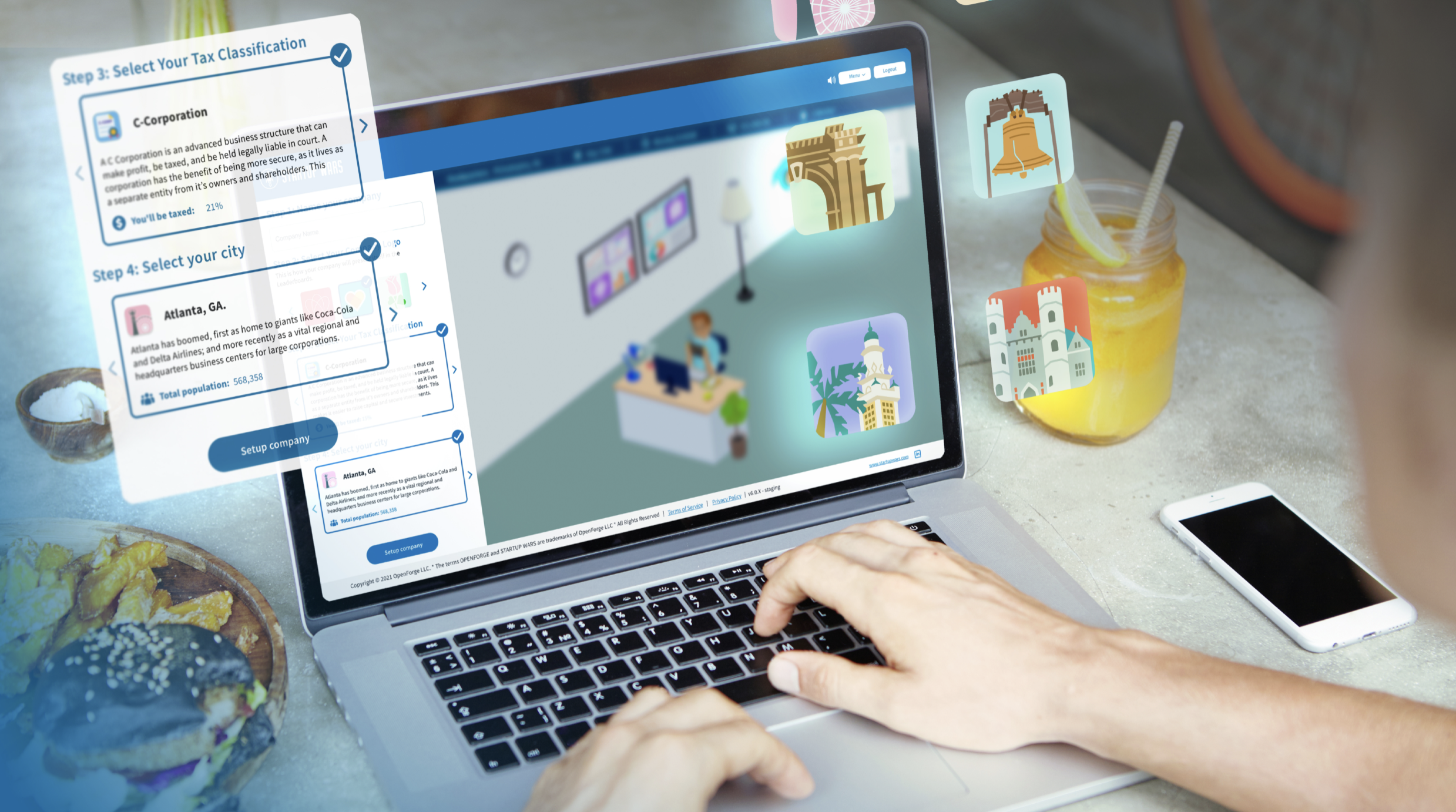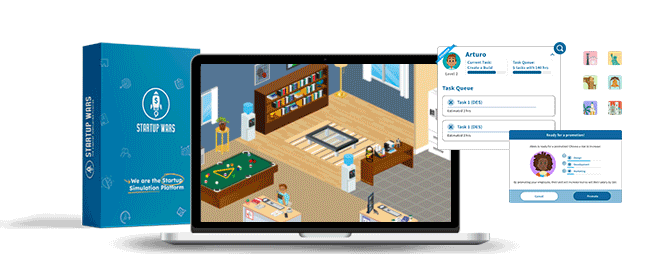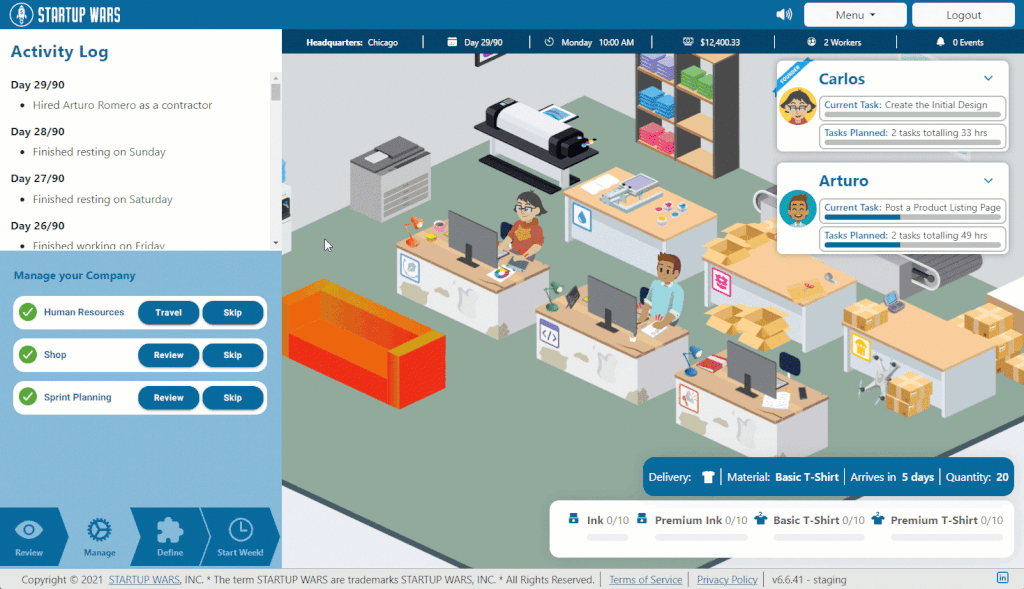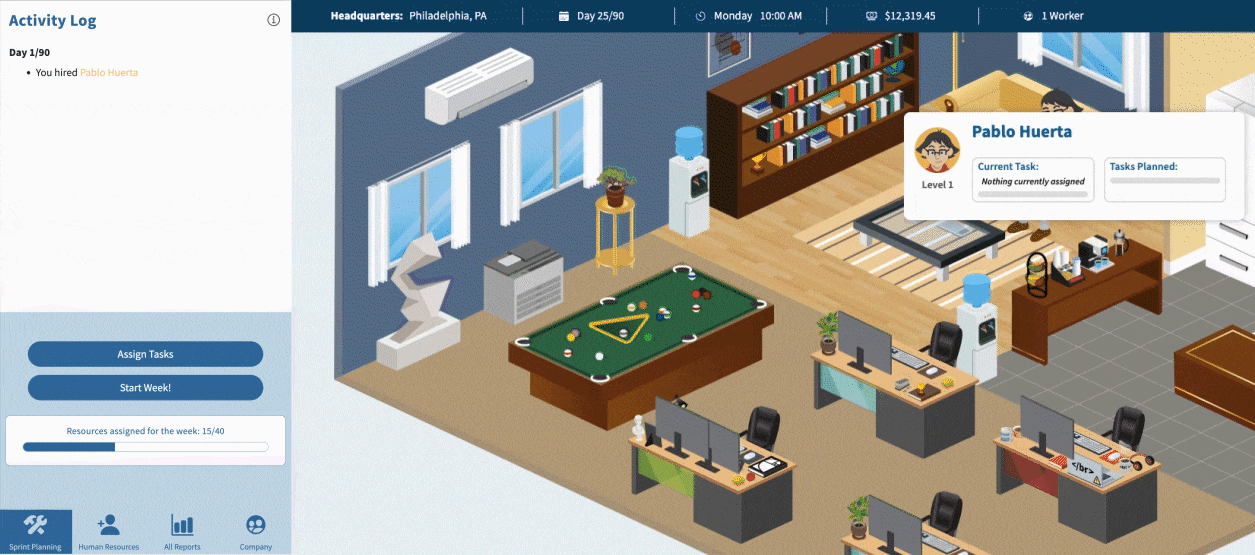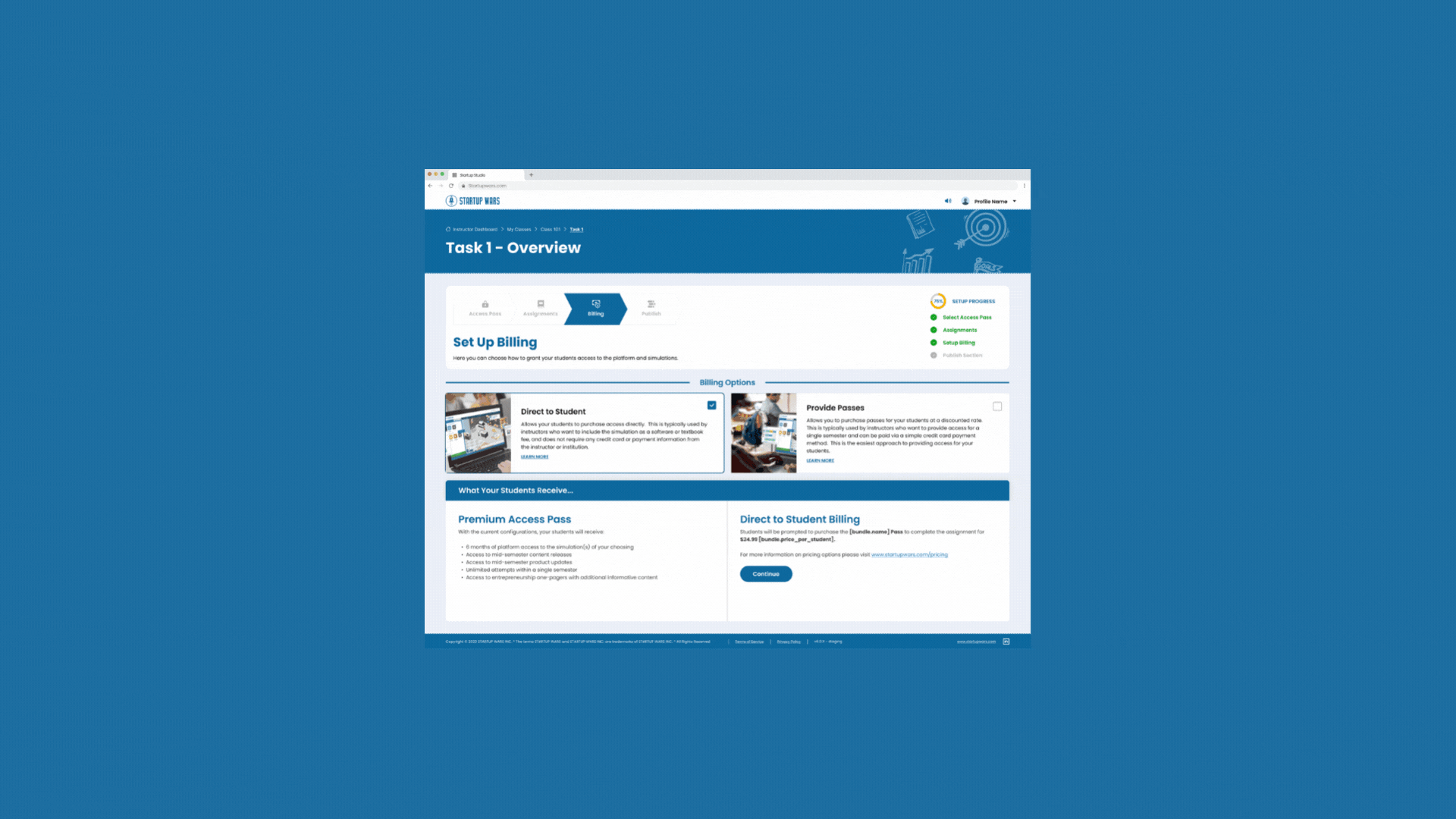Startup Wars
Product Design
Simulation UI
Figma
Adobe Illustrator
Sketch
Timeline
Roles
Tools
Summer ‘22 - April 2025
As Product Designer and Design Lead, I led the design process for new modules, features, and improvements. I ensured alignment with stakeholder needs and coordinated effectively with Development, Content, and QA teams for seamless execution.
Contributions
Product Overview
The Startup Wars platform enables institutions to provide students with a fun, engaging, and realistic series of simulations that foster excitement around entrepreneurship education.
Background
Every year, 2.14M U.S. college students become part of the ‘entrepreneurship club’.
There are currently 582 million bona-fide entrepreneurs world-wide - which leaves the question:
What’s the best way to learn entrepreneurship?
In modern business, engagement is key, but traditional platforms often lack active participation. Recognizing this, there's a growing need to integrate gamification principles. The challenge: develop a platform merging business functions with game elements to boost engagement, encourage desired behaviors, and improve results with the current resources within the platform.
Problem
Gamifying educational content boosts student engagement post-completion. Our research shows integrating gamification into business platforms enhances collaboration, motivation, and desired behaviors, leading to improved outcomes for modern enterprises.
Research
User Profile
Name: Emily Johnson
Age: 25
Occupation: Business Administration Student
Background: Emily is a proactive Business Administration student with a passion for entrepreneurship. She seeks hands-on learning experiences to apply theoretical knowledge practically. Tech-savvy, she enjoys using digital tools for learning.
Goals:
Gain practical business experience and strategic decision-making skills.
Deepen understanding of entrepreneurship concepts.
Enhance problem-solving in a business context.
Collaborate with peers for diverse perspectives. Seek feedback to improve learning and performance.
Design Challenges
Ensuring a cohesive Design System across portals and simulation modules.
Enhancing Usability and User Experience throughout the product in partnership with Development and QA teams.
Developing a versatile and dynamic Design Kit compatible with the Ionic framework for reuse and adaptability.
Strengthening Brand Communication Strategy across digital and physical platforms in collaboration with Marketing and Content teams.
Crafting experiences, environments, and visual assets for upcoming New Simulations slated for release within the year.
Design Process
Throughout the project, I blend Scrum, Agile, and Kanban methodologies to optimize efficiency and collaboration.
Using Scrum, I employ iterative development with sprint planning and reviews. Agile principles guide customer collaboration and incremental delivery. Kanban boards visualize workflow stages, ensuring smooth progress and swift issue resolution.
This versatile approach ensures projects are completed efficiently and effectively.
Achievements
UI and Modal Improvements
Onboarding Modals: Upon initial login, users were greeted with onboarding modals that guided them through key features and functionalities of the game. These modals provided a personalized introduction to Startup Wars and helped users understand how to navigate the platform effectively.
Content Engagement Modals: To combat information overload, I implemented content engagement modals that appeared when users accessed specific in-game resources. These modals offered related content suggestions, interactive decision making, and learning resources to enhance the user's learning experience and encourage further exploration of the platform.
Enhanced Learning: Users reported improved knowledge retention and practical skills development through hands-on experience in the simulation game. By applying theoretical concepts in realistic scenarios, users gained a deeper understanding of entrepreneurial principles and strategies through these UI improvements. User conducted research demonstrated an increase in playtime since these implementations.
Instructor & Student Portals
We recognized the importance of providing tailored experiences for both instructors and students to maximize learning outcomes. To achieve this goal, I led the design team to develop dedicated portals for instructors and students, offering enhanced functionalities to support teaching and learning through the following pieces:
Instructor Portal
Student Overview: Instructors gained access to a comprehensive dashboard displaying student profiles, progress metrics, and engagement levels. This overview enabled instructors to monitor individual student performance and identify students who may require additional support or intervention.
Goal Review: Instructors could review and provide feedback on students' learning goals, ensuring alignment with course objectives and offering guidance to help students achieve their aspirations effectively.
Engagement Tracking: The portal included tools to track student engagement with course materials, simulations, and interactive activities. Instructors could analyze engagement data to identify trends, assess learning effectiveness, and tailor instruction accordingly.
Summary Reports: Instructors generated summary reports summarizing student progress, achievements, and areas for improvement. These reports facilitated data-driven decision-making and provided insights into course effectiveness and student outcomes.
Monetization
We developed a monetization flow within the Instructor Portal that addressed these challenges, focusing on simplicity, flexibility, and user empowerment. The approach included several features designed to enhance both the platform's revenue potential and the instructor’s experience.
Student Portal
Simulation Overview: Students accessed an overview of available simulations, including descriptions, objectives, and recommended use cases. This overview empowered students to explore relevant simulations aligned with their learning goals and interests effectively.
Learning Goals: Students set and tracked their learning goals within the portal, with the ability to update progress, receive feedback from instructors, and adjust goals as needed. This feature promoted self-directed learning and accountability among students.
Resource Access: The portal provided access to a curated library of educational resources, including articles, tutorials, case studies, and video lectures. Students could easily browse and access relevant materials to supplement their learning experience.
Progress Tracking: Students monitored their progress and performance metrics within the portal, including completion status, quiz scores, and engagement statistics. Visualizations and progress indicators facilitated self-assessment and goal alignment.
Results
Improved Instructional Support: Instructors gained valuable insights into student progress, engagement, and performance, enabling them to provide targeted support and feedback to enhance learning outcomes effectively.
Enhanced Student Engagement: Students benefited from personalized learning experiences, goal setting tools, and access to relevant resources, leading to increased motivation, accountability, and satisfaction with the platform.
Data-Driven Decision Making: Both instructors and students leveraged data from the portals to make informed decisions, track progress, and optimize learning strategies based on performance insights and feedback.
Streamlined Communication: The portals facilitated communication and collaboration between instructors and students, fostering a supportive learning community and promoting active engagement in the educational process.
See Project

